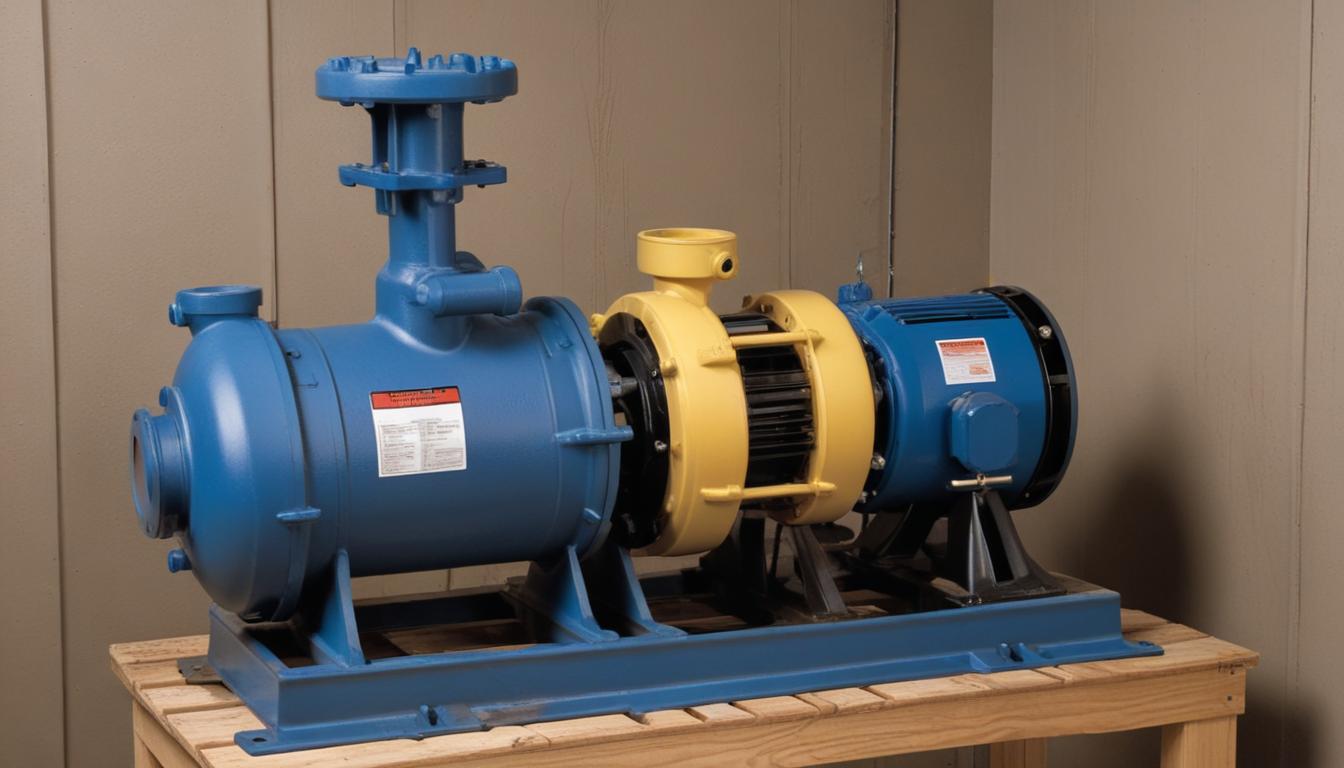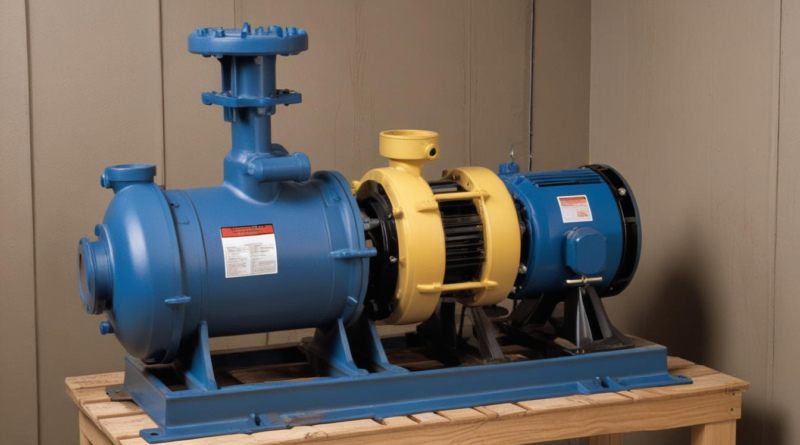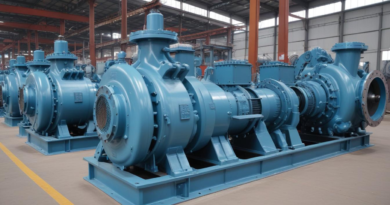how to troubleshoot pump flow rate issues
Accurate identification of pump flow rate discrepancies is critical for effective troubleshooting. Begin by measuring the actual flow rate using reliable instruments such as flow meters or ultrasonic sensors. Record these measurements under various operational conditions to establish a comprehensive performance profile.
Key Diagnostic Steps:
- Verify Measurement Accuracy: Ensure that flow measurement devices are calibrated and functioning correctly to obtain precise data.
- Compare with Specifications: Cross-reference the measured flow rates with the manufacturer’s specifications to identify any deviations.
- Assess Operating Conditions: Examine the current operating environment, including inlet and outlet pressures, temperature, and system demand, as these can influence the flow rate.
- Analyze Performance Trends: Review historical flow rate data to detect any declining trends that may indicate wear or emerging issues.
- Identify External Factors: Consider external variables such as blockages, leaks, or changes in downstream processes that might impact the pump’s performance.
Diagnostic Tools and Techniques:
- Flow Meters: Provide real-time measurement of the pump’s output, essential for monitoring performance.
- Pressure Gauges: Help determine if pressure levels are within the expected range, as deviations can affect flow rate.
- Data Logging Systems: Facilitate continuous monitoring and historical analysis of pump performance metrics.
By meticulously diagnosing pump flow rate issues through these steps, technicians can accurately pinpoint the underlying causes, paving the way for effective solutions to restore optimal pump functionality.
inspecting pump components
Inspecting each critical component of the pump is essential to identify mechanical issues that may be affecting the overall pump flow rate. A thorough examination helps in pinpointing worn or damaged parts that require maintenance or replacement. Below is a breakdown of key components to inspect, common signs of wear, and their potential impact on pump performance:
| Component | Signs of Wear/Issues | Impact on Pump Flow Rate |
|---|---|---|
| Impeller | Visible cracks, erosion, or deformation | Reduced hydraulic efficiency leading to decreased flow rate |
| Shaft | Bending, misalignment, or corrosion | Impaired rotation causing inconsistent flow and potential vibrations |
| Seals and Bearings | Leakage, excessive play, or unusual noises | Fluid leaks can reduce flow rate; worn bearings may cause misalignment |
| Motor and Drive Mechanism | Overheating, electrical issues, or mechanical wear | Inadequate power transmission leading to insufficient pump speed and flow |
| Valves and Piping | Blockages, leaks, or improper installation | Restricts flow path, causing decreased flow rate and potential pressure drops |
- Impeller Inspection: Carefully examine the impeller for any signs of physical damage such as cracks or erosion. A damaged impeller can disrupt the flow dynamics, resulting in a significant reduction in pump flow rate.
- Shaft Alignment: Use precision alignment tools to ensure that the pump shaft is correctly aligned with the motor. Misalignment can cause undue stress on bearings and seals, leading to leaks and mechanical inefficiencies.
- Seal and Bearing Condition: Inspect seals for any signs of leakage and bearings for excessive wear or noise. Replacing worn seals and bearings can prevent fluid loss and maintain consistent pump performance.
- Motor Performance: Check the motor for proper operation, ensuring it is running smoothly without overheating or electrical faults. A malfunctioning motor can result in inadequate pump speed, directly affecting the flow rate.
- Valves and Piping Integrity: Assess all valves and piping connected to the pump system for blockages or leaks. Ensuring a clear and intact flow path is crucial for maintaining optimal pump flow rate.
Regular inspection of these components not only aids in troubleshooting flow rate issues but also extends the lifespan of the pump by addressing problems proactively. Implementing a scheduled maintenance routine can help in early detection of potential failures, ensuring continuous and efficient pump operation.
evaluating system pressure
Accurately assessing the system pressure is pivotal in identifying and resolving issues affecting the pump flow rate. Pressure plays a fundamental role in determining how effectively a pump can move fluid through a system. Variations or anomalies in pressure can indicate underlying problems that may hinder optimal pump performance. The following steps outline a detailed approach to evaluating system pressure:
Understanding Pressure-Flow Relationship:
The relationship between pressure and flow rate is governed by the system’s hydraulic characteristics and the pump’s performance curve. Generally, as the system demand increases, the flow rate and corresponding pressure may fluctuate. Understanding this interplay is essential for effective troubleshooting.
Measuring System Pressure:
Accurate measurement of both inlet and outlet pressures is essential. Utilize calibrated pressure gauges or advanced sensors to obtain precise readings. It’s advisable to measure pressures at multiple points within the system to gain a comprehensive understanding of pressure dynamics.
Steps to Evaluate System Pressure:
- Install Pressure Measurement Devices: Ensure that pressure gauges are correctly installed at key locations, including the pump inlet, outlet, and critical points along the piping system.
- Record Baseline Pressure: Establish baseline pressure readings under normal operating conditions to facilitate future comparisons.
- Analyze Pressure Variations: Monitor pressure changes over time and under different operating scenarios to identify patterns or irregularities.
- Compare with Pump Specifications: Refer to the pump’s performance curve to determine if the measured pressures align with expected values for the desired flow rate.
- Identify Pressure Drops: Significant drops in pressure may indicate blockages, leaks, or other obstructions within the system.
Interpreting Pressure Data:
Interpreting the collected pressure data involves comparing it against the pump’s rated performance and the system’s hydraulic requirements. Deviations from expected pressure levels can help pinpoint specific issues affecting the flow rate.
Common Pressure-Related Issues:
| Issue | Possible Causes | Impact on Flow Rate |
|---|---|---|
| Low Outlet Pressure |
|
Results in reduced pump flow rate, limiting the system’s performance. |
| High Inlet Pressure |
|
Can cause the pump to work harder, potentially leading to overheating and decreased flow efficiency. |
| Pressure Fluctuations |
|
Leads to inconsistent flow rates, affecting the stability of the system’s operation. |
Tools and Techniques for Pressure Evaluation:
- Digital Pressure Gauges: Offer precise and real-time pressure readings, essential for accurate monitoring.
- Data Loggers: Capture and store pressure data over extended periods, facilitating trend analysis and early detection of anomalies.
- Pressure Transducers: Convert pressure measurements into electrical signals, enabling integration with automated monitoring systems.
Implementing Solutions Based on Pressure Analysis:
Once pressure issues are identified, targeted solutions can be implemented to restore optimal pump flow rate:
- Clearing Blockages: Remove any obstructions in the intake or discharge lines to ensure unobstructed fluid flow.
- Replacing Worn Components: Swap out damaged impellers, seals, or valves that may be contributing to pressure irregularities.
- Adjusting Pump Speed: Modulate the pump speed to achieve the desired pressure and flow rate, ensuring alignment with system requirements.
- Enhancing System Design: Redesign or upgrade piping and valve configurations to reduce pressure losses and improve overall efficiency.
By meticulously evaluating system pressure, technicians can uncover critical insights into the factors affecting the pump flow rate. This comprehensive approach not only aids in effective troubleshooting but also facilitates the implementation of precise solutions to enhance pump performance and system reliability.
checking for blockages
 Identifying and addressing blockages within the pump system is essential for maintaining an optimal pump flow rate. Blockages can occur in various parts of the system, including piping, valves, and the pump itself, leading to reduced efficiency and potential system failures. The following steps outline a comprehensive approach to detecting and resolving blockages:
Identifying and addressing blockages within the pump system is essential for maintaining an optimal pump flow rate. Blockages can occur in various parts of the system, including piping, valves, and the pump itself, leading to reduced efficiency and potential system failures. The following steps outline a comprehensive approach to detecting and resolving blockages:
Common Causes of Blockages:
| Location | Possible Causes | Impact on Pump Flow Rate |
|---|---|---|
| Intake Lines |
|
Reduces the volume of fluid entering the pump, thereby decreasing flow rate and increasing energy consumption. |
| Discharge Lines |
|
Hinders the fluid’s exit from the pump, causing pressure buildup and lowering the overall flow rate. |
| Internal Pump Components |
|
Impedes the smooth movement of fluid within the pump, resulting in decreased hydraulic efficiency. |
Steps to Check for Blockages:
- Visual Inspection: Begin with a thorough visual examination of all accessible piping, valves, and the pump housing. Look for obvious signs of blockage such as discoloration, sediment buildup, or physical obstructions.
- Flow Monitoring: Utilize flow meters to detect abnormal flow patterns that may indicate a blockage. A sudden drop in flow rate can be a precursor to more significant obstructions.
- Pressure Analysis: Compare inlet and outlet pressures using calibrated pressure gauges. A significant pressure differential often points to a blockage downstream.
- Cleaning Procedures: Implement cleaning protocols such as backflushing, chemical cleaning, or mechanical removal to eliminate identified blockages. Ensure that all cleaning agents are compatible with the system materials to prevent damage.
- Filter and Strainer Maintenance: Regularly inspect and replace filters and strainers to prevent debris from entering the pump system. Clogged filters are a common source of blockages and should be addressed promptly.
Preventive Measures to Avoid Future Blockages:
- Regular Maintenance: Establish a routine maintenance schedule to inspect and clean all components prone to blockage. This proactive approach helps in early detection and mitigation of potential issues.
- Install Proper Filtration Systems: Utilize high-quality filters and strainers at critical points within the system to capture debris before it can cause blockages.
- Use of Additives: In systems prone to scale or biological growth, consider using chemical additives that inhibit deposition and maintain cleaner pipelines.
- System Design Optimization: Design the pump system with smooth bends and appropriate sizing to minimize areas where debris can accumulate. Proper system design reduces the likelihood of blockages and enhances overall flow efficiency.
Tools and Techniques for Blockage Detection:
- Endoscopic Cameras: Provide a visual assessment of internal pump components and hard-to-reach piping sections without disassembly.
- Ultrasonic Flow Meters: Detect changes in flow velocity and patterns that may indicate partial blockages.
- Thermal Imaging: Identifies temperature variations caused by restricted flow, which can be indicative of blockages.
By systematically checking for and addressing blockages, technicians can effectively enhance the pump flow rate and ensure the reliable operation of the pumping system. Implementing these strategies not only aids in troubleshooting existing flow issues but also provides long-term solutions to maintain optimal pump performance.
implementing corrective measures
Once the underlying issues affecting the pump flow rate have been accurately identified, it is essential to implement targeted corrective measures to restore optimal performance. The following strategies provide comprehensive solutions tailored to address common problems discovered during troubleshooting:
Corrective Actions Based on Identified Issues:
| Identified Issue | Corrective Measure | Expected Outcome |
|---|---|---|
| Worn or Damaged Impeller | Replace the impeller with a new or refurbished unit that matches the pump specifications. | Restores hydraulic efficiency, resulting in increased pump flow rate. |
| Clogged Discharge Valves | Clean or replace clogged valves to ensure unobstructed fluid flow. | Prevents pressure buildup and enhances the overall flow rate. |
| Misaligned Shaft | Realign the pump and motor shafts using precision alignment tools. | Reduces mechanical stress, minimizes vibrations, and ensures consistent flow. |
| Leaking Seals or Worn Bearings | Replace faulty seals and bearings to eliminate leaks and ensure smooth operation. | Maintains fluid integrity and prevents flow rate reductions due to leaks. |
| Blockages in Intake or Discharge Lines | Remove obstructions through cleaning procedures such as backflushing or using mechanical removal tools. | Ensures unobstructed fluid pathways, thereby improving flow rate. |
| Inadequate Pump Speed | Adjust the pump speed using variable frequency drives (VFDs) to match system requirements. | Optimizes flow rate and energy consumption based on current demand. |
| Corroded Internal Pump Components | Replace corroded parts and apply corrosion-resistant materials or coatings. | Prevents future degradation and maintains consistent pump performance. |
| System Design Inefficiencies | Redesign piping layouts to include smoother bends and appropriate sizing. | Reduces pressure losses and enhances overall flow efficiency. |
Step-by-Step Implementation Process:
- Prioritize Issues: Begin by addressing the most critical issues that have the highest impact on pump flow rate. This ensures that the most significant performance bottlenecks are resolved first.
- Plan Maintenance Activities: Develop a maintenance schedule that outlines the specific corrective actions, required tools, and resources needed for each task.
- Execute Repairs or Replacements: Carry out the identified corrective measures meticulously, ensuring that each component is handled according to manufacturer guidelines and industry best practices.
- Test System Performance: After implementing corrective actions, conduct tests to verify that the pump flow rate has returned to desired levels. Use the same measurement tools and conditions established during the diagnostic phase for consistency.
- Document Changes: Keep detailed records of all corrective measures taken, including parts replaced, adjustments made, and performance outcomes. This documentation aids in future troubleshooting and maintenance planning.
Preventive Strategies to Sustain Optimal Flow Rates:
- Regular Maintenance: Establish a routine maintenance schedule to inspect and service pump components, thereby preventing the recurrence of issues.
- Upgrade to Advanced Monitoring Systems: Implement automated monitoring solutions that provide real-time data on pump performance, enabling prompt detection of anomalies.
- Staff Training: Ensure that maintenance personnel are adequately trained in pump operation and troubleshooting techniques to effectively address potential problems.
- Implement Redundancies: Incorporate backup pumps or parallel pumping systems to maintain flow rates during maintenance or in case of pump failures.
- Optimize System Design: Continuously assess and refine the pump system design to accommodate changing operational demands and technological advancements.
Tools and Resources for Implementation:
- Replacement Parts Inventory: Maintain an inventory of critical spare parts such as impellers, seals, and bearings to facilitate timely repairs.
- Precision Alignment Tools: Utilize laser alignment systems or dial indicators to ensure accurate shaft alignment during maintenance.
- Advanced Cleaning Equipment: Invest in backflushing machines or chemical cleaning agents compatible with system materials to effectively remove blockages.
- Variable Frequency Drives (VFDs): Implement VFDs to adjust pump speed dynamically, optimizing flow rate based on real-time system demands.
- Monitoring Software: Use software platforms that integrate data from various sensors to provide comprehensive insights into pump performance and facilitate data-driven decision-making.
By systematically implementing these corrective measures, technicians can effectively resolve issues affecting the pump flow rate and enhance the overall reliability and efficiency of the pumping system. These solutions not only address immediate problems but also contribute to the long-term sustainability and performance optimization of the pump infrastructure.




